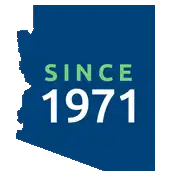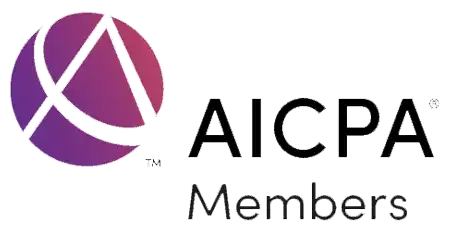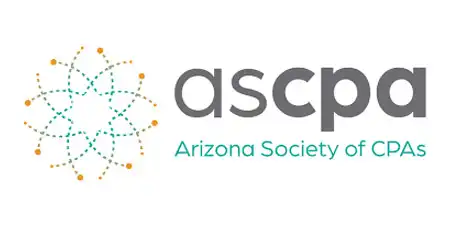The final rule offers a standard allowance for revenue loss of $10 million, allowing recipients to select between a standard amount of revenue loss or complete a full revenue loss calculation. Recipients that select the standard allowance may use that amount – in many cases their full award – for government services, with streamlined reporting requirements.
The Final Rule Overview has more detailed information beginning on page 9:
Recipients have two options for how to determine their amount of revenue loss. Recipients must choose one of the two options and cannot switch between these approaches after an election is made.
1. Recipients may elect a “standard allowance” of $10 million to spend on government services through the period of performance.
Under this option, which is newly offered in the final rule Treasury presumes that up to $10 million in revenue has been lost due to the public health emergency and recipients are permitted to use that amount (not to exceed the award amount) to fund “government services.” The standard allowance provides an estimate of revenue loss that is based on an extensive analysis of average revenue loss across states and localities, and offers a simple, convenient way to determine revenue loss, particularly for SLFRF’s smallest recipients.
All recipients may elect to use this standard allowance instead of calculating lost revenue using the formula below, including those with total allocations of $10 million or less. Electing the standard allowance does not increase or decrease a recipient’s total allocation.
2. Recipients may calculate their actual revenue loss according to the formula articulated in the final rule.
Under this option, recipients calculate revenue loss at four distinct points in time, either at the end of each calendar year (e.g., December 31 for years 2020, 2021, 2022, and 2023) or the end of each fiscal year of the recipient. Under the flexibility provided in the final rule, recipients can choose whether to use calendar or fiscal year dates but must be consistent throughout the period of performance. Treasury has also provided several adjustments to the definition of general revenue in the final rule.
8.
Revenue Replacement: Recipients will have the option to update or provide information associated with revenue replacement not previously provided as part of prior submissions. Information previously provided as part of the Interim Report (if provided) or Project and Expenditure Report (if provided) will display in this screen.
As outlined in the final rule, recipients will have the option to make a one-time decision to either calculate revenue loss according to the formula outlined in the final rule or elect a “Standard Allowance” of up to $10 million, not to exceed the award allocation, to spend on government services throughout the period of performance.
Recipients must make this one-time decision during the April 2022 reporting deadline.
Recipients may choose to calculate their actual revenue loss according to the formula outlined in the final rule. It is important to note that they are not required to use the entire amount of the revenue loss. It is best thought of as a not-to-exceed amount that may be used for provision of government services.
Recipients that choose to calculate their actual revenue loss according to the formula will be required to enter the following data elements in the report:
- Base Year General Revenue
- Growth Adjustment Used
- Year End Date
- Actual General Revenue (2020 and 2021)
- Estimated Revenue Loss Due to COVID-19 Public Health Emergency
- Were Fiscal Recovery Funds used to make a deposit into a pension fund? (yes/no)
- An explanation of how revenue replacement funds were allocated to government services
There is not a simple definition for “Base Year General Revenue.” The Final Rule points us back to the
Interim Final Rule, which adopted a definition of “general revenue” based largely on the components reported under “General Revenue from Own Sources” in the Census Bureau’s Annual Survey of State and Local Government Finances. The Interim Final Rule defined the term “general revenue” to include revenues collected by a recipient and generated from its underlying economy and would capture a range of different types of tax revenues, as well as other types of revenue that are available to support government services. In calculating revenue, recipients should sum across all revenue streams covered as general revenue.
Common revenue sources that compose general revenue include, but are not limited to the following:
- Tax revenues
- Charges for services
- Intergovernmental transfers between State and local governments
- Rents
- Royalties
- Lottery proceeds
- Fines
- All revenue from Tribal enterprises and gaming operations
The following revenue sources are
excluded
from the definition of general revenue:
- Intergovernmental transfers from the Federal government
- Utility revenue
- Social insurance trust revenue
Treasury published a general revenue table in the Appendix to the Coronavirus State and Local Fiscal Recovery Funds Frequently Asked Questions (FAQ) that was most recently updated in January 2022. It helpfully provides, on the final page (43), a
diagram of included and excluded revenue sources. The Final Rule adjusted the definition to allow recipients that operate utilities that are part of their own government to choose whether to include revenue from these utilities in their revenue loss calculation. The Final Rule also clarified in the text that revenue includes liquor store revenue.
The growth adjustment is the greater of either a standard growth rate — 5.2 percent — or the recipient’s average annual revenue growth in the last full three fiscal years prior to the COVID-19 public health emergency. Note that the standard growth rate was 4.1% in the Interim Final Rule but was updated to 5.2% in the Final Rule. Recipients should also note that the growth rate is compounded annually. Let’s make certain assumptions and show a hypothetical set of calculations:
- Base Year General Revenue = $10,000,000 for the year ended 12/31/2019
- Growth Adjustment Used = standard growth rate of 5.2%
- Year End Date = 12/31/2019
- Actual General Revenue: $8,000,000 for the year ended 12/31/2020, and $9,000,000 for the year ended 12/31/2021
Estimated Revenue Loss Due to COVID-19 Public Health Emergency
- 2020 revenue would have been $10,000,000 + 5.2% = $10,520,000 - $8,000,000 = $2,520,000 lost revenue
- 2021 revenue would have been $10,000,000 + (5.2% squared) 10.67% = $11,067,000 - $9,000,000 = $2,067,000 lost revenue
Recipients may not yet have considered how to allocate revenue replacement funds to government services. The FAQ provides a non-exhaustive list of areas to consider:
The Interim Final Rule gives recipients broad latitude to use funds for the provision of government services to the extent of reduction in revenue. Government services can include, but are not limited to, maintenance of infrastructure or pay-go spending for building new infrastructure, including roads; modernization of cybersecurity, including hardware, software, and protection of critical infrastructure; health services; environmental remediation; school or educational services; and the provision of police, fire, and other public safety services.
Recipients may be unsure whether a particular infrastructure upgrade, such as fire hydrants, would be an eligible cost in the “Public Health and Economic Impacts” or “Water, Sewer & Broadband Infrastructure” sections of the Fund. Using the “Replacing Lost Public Sector Revenue” section for projects provides greater flexibility as well as streamlined reporting and compliance requirements.
For the explanation of how revenue replacement funds were allocated to government services, recipients will want to consider language that is sufficiently granular to meet Treasury’s minimum reporting requirements while not being overly specific to lock themselves prematurely into a particular course of action. Another consideration is to avoid using revenue replacement funds to fund support services that are included in the recipient’s indirect cost pool. That approach could have the effect of transforming indirect cost pool expenditures into direct costs, thereby reducing the negotiated indirect cost rate down the road.
Summary
Recipients are facing decisions regarding Revenue Replacement that must be made quickly so they can be implemented in the SLFRF quarterly or annual report. Recipients must:
- determine whether to use the Standard Allowance or to calculate lost revenue using the formula;
- enter an amount of revenue loss; and
- describe how they plan to allocate the funds.





